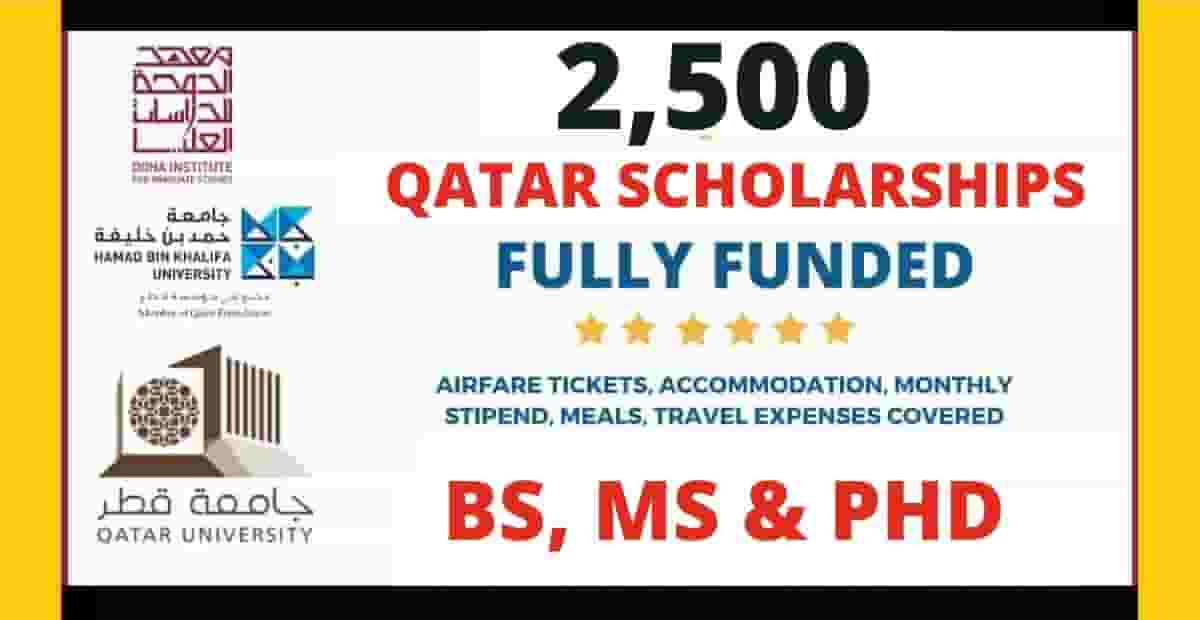Study In USA: How To Migrate To USA as a Student
This article is aimed at providing you with detailed information on how to study in the US.
Spanning six time zones the USA is regarded as one of the finest education providers in the world and sees increasing numbers of postgraduate students flock to its universities each year.
Studying in the USA you’ll have the pick of thousands of institutions and degree programmes, as well as the opportunity to broaden your cultural horizons by experiencing American campus life. You can also give your CV a boost by getting involved in the huge variety of clubs and organisations on offer, including sports.
Popular student cities include Boston, Chicago, Los Angeles, New York City, and San Francisco but if your sights are set on a less obvious destination you have 50 states to choose from.
How To Migrate To USA as a Student
American Universities
The country has one of the largest education systems in the world with more than 4,500 institutions. While English is the main language in the USA, you’ll have to get used to the differing academic terminology. Universities are generally known as colleges, of which there are two main types:
Public colleges – large, state-funded institutions that have lower tuition fees but more students. International students will pay higher fees.
Private colleges – smaller universities funded by private donations, tuition fees and grants. The opposite of public colleges, they have higher fees but fewer students. Overseas students pay the same fees as state residents.
Five of the top ten universities in the world are US institutions according to the QS World University Rankings 2024, These include:
- 1st – Massachusetts Institute of Technology (MIT)
- 2nd – Stanford University
- 3rd – Harvard University
- 4th – California Institute of Technology (Caltech)
- 9th – University of Chicago.
- Eight institutions also make up the Ivy League, a group of prestigious colleges:
Brown University (Rhode Island)
Columbia University (New York)
Cornell University (New York)
Dartmouth College (New Hampshire)
Harvard University (Massachusetts)
University of Pennsylvania (Pennsylvania)
Princeton University (New Jersey)
Yale University (Connecticut)
The academic calendar is split into two semesters; fall (autumn) runs from mid-August to December, and spring runs from January to May.
Degree courses in the USA
Undergraduate
There are two types of undergraduate degrees on offer in the USA:
Associate degrees – take two years to complete and are usually studied at technical, community or junior colleges. Students can study for an associate qualification in a range of subjects and then transfer to a Bachelor’s programme to complete an additional two years of study to gain a Bachelor’s degree.
Bachelors degrees – take four years to complete. They differ from UK undergraduate degrees in that students study a variety of subjects before deciding on which to focus on, known as a ‘major’. Students may also gain a ‘minor’ qualification by completing classes in an additional subject alongside their ‘major’.
For entry onto a Bachelor’s degree, you’ll need at least five GCSE passes and two A-levels. To ensure that your chosen university recognises your qualifications you’ll need to contact the admissions office.
Postgraduate
Masters degrees: Known as ‘graduate degrees’ in the USA around 1,700 colleges offer programmes in a variety of subjects.
There are two types of graduate degrees:
Academic/research – usually completed in two years (some courses may only take one). Academic graduate degrees generally lead to a career in academia or research.
Professional – these are designed to prepare students for particular professions. They take two years to complete.
Unlike in the UK there are no pure research graduate programmes on offer. Instead students learn through a combination of taught and research components. Students are also assessed on a more regular basis in the USA. Instead of undertaking a small number of large assessments, you’ll face more frequent, smaller assessments.
Applying for a Master’s degree follows a similar process to the UK. You will need a minimum of a 2:2 undergraduate degree from a recognized institution. It is worth remembering that there is no official conversion rate between UK A-level/degree results and US grades. Most institutions will have their own policy so it’s vital to get in touch before you apply.
You can search for US Masters degrees by field of study and location at International Student School Search.
PhDs
A Doctoral degree is the highest qualification that a student can achieve in the USA. They typically take four to six years to complete.
To be awarded with a PhD you’ll need to pass comprehensive examinations and produce original research, usually in the form of a dissertation.
Commonly studied subjects include anthropology, biology, education, engineering, psychology and sociology.
Student exchanges
UK students and graduates can apply for a range of exchange opportunities with the Fulbright Commission’s Fulbright Awards Programme. You can attend a US institution to pursue a postgraduate degree or lecture and conduct research in the USA.
Many UK universities are partnered with a US counterpart or are members of the International Student Exchange Program (ISEP). For example, the University of Central Lancashire (UCLan) is an ISEP member and has partners in the USA and other countries.
Course fees
Studying in the USA is expensive, so any decision to study here should not be taken lightly.
Public universities charge two sets of fees: a lower rate applies to in-state students while a higher rate is charged for all out-of-state students. Private institutions don’t differentiate between out-of-state and domestic students and charge the same rate for all, although fees will be higher than at public universities.
Fees for graduate programmes vary widely depending on your chosen subject and institution. For example, course fees and living costs at a top ranked institution could cost as much as $70,000 (£55,000) but there is financial help available depending on your circumstances. To find out exactly how much your postgraduate course costs, contact your university.
While tuition fees are pricey the annual cost of living is generally much lower than in other countries such as the UK.
Funding to study in the USA
Each year international students receive a significant amount of financial help. Funding for overseas students does exist and generally differs between institutions. Some provide scholarships covering the entire cost of study, while others contribute towards the overall cost. Common sources of funding include:
Needs-based financial aid – if your family income falls below a certain amount then many institutions can assist with tuition fees and accommodation.
Merit scholarships – for those with outstanding talent or excellent grades in a specific subject.
Sports scholarships – for talented sportsmen and women. You need the required grades as well as sporting excellence.
Around 20 scholarships are offered each year by the Fulbright Commission Award Programme. UK students looking to pursue a postgraduate degree are eligible, with awards varying from journalism to medicine. For a list of awards visit Fulbright Commission – Awards and Programmes for UK Postgraduates.
A number of institutions also set aside a significant sum to assist international undergraduates.
Student visas
Any foreign national looking to enter the USA will need a visa.
The F-1 non-immigrant visa is the most common type for those wishing to study in the USA at an accredited college or university. You’ll need to have been accepted and approved on your course before applying for one. You will then register with the Student and Exchange Visitor Information System (SEVIS) and there is a $200 (£155) fee for this.
You will also need to make an appointment for a visa interview with the US embassy in your country. You’ll need to bring the following:
- your passport
- your visa application form
- financial documents.
- The earlier you start this process the better – F-1 visas can be issued 120 days before your course start date.
US visa requirements can be complicated so for a complete guide visit the US Department of State – Student Visas.
Due to the current political situation in the US and the changeable nature of immigration laws, nationals of predominantly Muslim countries will need to keep a close eye on any rules or restrictions that may affect them entering the USA.
How to apply
It can take longer to apply to a US institution due to the various stages you must negotiate. It’s advised that you apply 12 to 18 months in advance. The Fulbright Commission recommends that you apply to no more than six institutions – this will allow you enough time to focus on each application while giving you an increased chance of success.
To study in the USA all students must apply directly to their chosen institution and sit a multiple choice admission exam. Most universities require students to sit SAT or ACT exams. They can be taken in test centres around the UK and cost roughly £50 each. Kaplan provides free SAT practice tools as well as SAT and ACT test preparation courses.
Additionally you’ll need to provide:
- an application form
- a personal statement
- transcripts of academic records
- two or three recommendation letters
- admission exam scores.
- For graduate programmes you may have to provide a research statement and CV and also attend an interview.
All students must pay an application fee to each university, usually $50 to $100.
Application deadlines for postgraduate study vary but most fall between November and February.
Language requirements
Courses in the USA are taught in English. If English is not your first language then you will be required to sit an English Language Proficiency test. The TOEFL and IELTS tests are widely accepted.
Comparison to UK qualifications
Qualifications gained at US institutions are widely respected and recognised around the globe.
To be sure that your degree is recognised in your home country check with your chosen university.
Can I migrate to the USA as a student?
While studying in the USA can be an enriching experience, simply holding a student visa does not grant you permanent residency status. However, certain visa options, such as the Optional Practical Training (OPT) and employment-based visas (e.g., H-1B), provide opportunities for international students to work and potentially transition to permanent residency based on their qualifications, skills, and employment prospects in the USA.
How do I apply for a student visa to study in the USA?
To apply for a student visa (F or M visa) to study in the USA, you must first obtain acceptance to a Student and Exchange Visitor Program (SEVP)-approved school in the USA and receive a Form I-20 (for F visa) or Form DS-2019 (for M visa). You then need to apply for the appropriate student visa at the nearest U.S. Embassy or Consulate. Along with your application, you’ll need to provide proof of financial resources, intent to return to your home country and meet other visa requirements.
Can I work while studying in the USA on a student visa?
Yes, international students with a valid student visa (F-1 or M-1) are generally allowed to work on-campus part-time (up to 20 hours per week) during the academic term and full-time during scheduled breaks. Limited off-campus employment opportunities may also be available under certain circumstances, such as Curricular Practical Training (CPT) or Optional Practical Training (OPT) authorization.
What options are available for staying in the USA after completing my studies?
Upon completing your studies in the USA, you may have several visa options to remain in the country. The Optional Practical Training (OPT) program allows F-1 students to work in their field of study for up to 12 months after graduation (or up to 36 months for STEM degree holders). Additionally, employment-based visas like the H-1B visa may be available for individuals with specialized skills and job offers from U.S. employers. Furthermore, certain family-based and investment-based immigration pathways also exist for those seeking permanent residency.
How can studying in the USA benefit my future migration prospects?
Studying in the USA can enhance your migration prospects in several ways. Firstly, completing a degree from a U.S. institution can improve your qualifications and make you more competitive in the job market. Secondly, participating in optional practical training (OPT) can provide valuable work experience and potentially lead to sponsorship by U.S. employers for employment-based visas. Lastly, networking and building connections during your studies can open up opportunities for employment and immigration sponsorship in the USA.
Conclusion
We hope this article is able to provide you with information on everything involved in the United states? If yes, kindly share with others.








